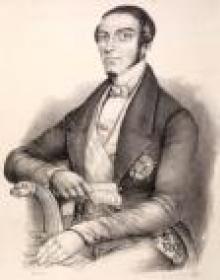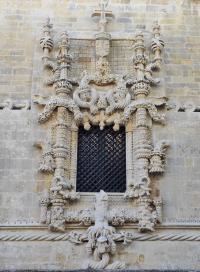- HOME
- MONUMENT
- Convent of Christ
- History
- Architecture
- Personalities
- King Afonso Henriques
- D. Gualdim Pais
- King Dinis
- King John I
- D. Lopo Dias de Sousa
- King Duarte
- Prince D. Henrique (Henry
- King John II (1455 - 1495
- King Manuel I (1469 - 152
- Diogo de Arruda
- João de Castilho
- Jorge Afonso
- Olivier de Gand
- King John III (1502 - 155
- Diogo de Torralva
- Friar Anthony of Lisbon
- Baltazar de Faria
- Filipe Terzi
- Philippine Dinasty
- King Philip II of Spain
- King John IV
- Domingos Serrão
- Queen Mary II
- Prince Fernando
- Costa Cabral
- Artisans and Artists
- Intangible Heritage
- Related Heritage
- Glossary
- VISIT OUR MONUMENT
- HERITAGE LEARNING
- TOMAR
- MONASTERIES ROUTE

Costa Cabral (1803 - 1889)
António Bernardo da Costa Cabral (Algodres, May 9th, 1803 - Oporto, September 1st, 1889), 1st Earl and 1st Marquess of Tomar, better known simply as Costa Cabral, was a Portuguese politician who, amongst other duties and functions, was member of parliament, peer of the Realm, effective State Councillor, Minister for Justice and Ecclesiastical Affairs, Minister of the Kingdom (...) This leading figure as a statesman in Portuguese politics during the first phase of Constitutional monarchy strongly asserts him as being at the core of the whole institutional consolidation of political Liberalism that characterized the reign of Queen Mary II. From 1841, he was also Grand Master of Freemasonry.
António Bernardo da Costa Cabral was still at the beginning of his political career, being just another Member of Parliament, when he purchased parts of the Convent of Christ and its outer walls in 1838. There he had decided to establish his holidaying home and do farming at Mata dos Sete Montes (Forest of Seven Hills). The purchased area spread around the Ravens Cloister though he also came to own a few other areas scattered throughout the monument. Bearing witness to his love for those magical spaces and to his illuminated awareness of their high value, are the urgent measures he took to safeguarding the convent that was deteriorating since the Order of Christ's monks had left.
As soon as entered government in 1839 he promoted the appointment of guards to watch that high monument of Portugal, ordered from his own purse a few urgent restoration works, particularly in the Charola, and prevented the transportation in dire conditions to Lisbon to continue of some of the valuable boards that still remained there. In his years of political fall from grace, he also sought retirement to Tomar where he wrote a History of Tomar having the Convent as its central theme. Already as an 86 years-old, when returning from his long posting to the Holy See, he went back to the Convent so as to deliver it to his eldest son, and then going to die at Foz do Douro. For over three generations, until 1942, he kept the Convent being guarded by his descendants who, after all, protected, helped maintaining and loved it.
António Bernardo da Costa Cabral was still at the beginning of his political career, being just another Member of Parliament, when he purchased parts of the Convent of Christ and its outer walls in 1838. There he had decided to establish his holidaying home and do farming at Mata dos Sete Montes (Forest of Seven Hills). The purchased area spread around the Ravens Cloister though he also came to own a few other areas scattered throughout the monument. Bearing witness to his love for those magical spaces and to his illuminated awareness of their high value, are the urgent measures he took to safeguarding the convent that was deteriorating since the Order of Christ's monks had left.
As soon as entered government in 1839 he promoted the appointment of guards to watch that high monument of Portugal, ordered from his own purse a few urgent restoration works, particularly in the Charola, and prevented the transportation in dire conditions to Lisbon to continue of some of the valuable boards that still remained there. In his years of political fall from grace, he also sought retirement to Tomar where he wrote a History of Tomar having the Convent as its central theme. Already as an 86 years-old, when returning from his long posting to the Holy See, he went back to the Convent so as to deliver it to his eldest son, and then going to die at Foz do Douro. For over three generations, until 1942, he kept the Convent being guarded by his descendants who, after all, protected, helped maintaining and loved it.
SERVICES - ACTIVITIES



